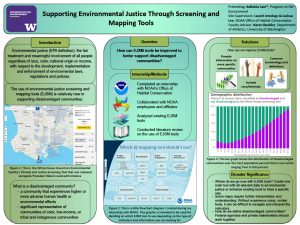Supporting Environmental Justice Through Screening and Mapping Tools
Environmental justice has been a prevalent issue spanning across the world and more specifically in the United States. Research in environmental justice began in 1978 after toxins were released in a minority and low-income community. Environmental justice screening and mapping (EJSM) tools have been used increasingly over the past few decades to map instances of environmental injustice and support minority and low-income populations. The purpose of this study was to analyze how current EJSM tools can be improved to support disadvantaged communities. During my internship portion of the capstone, I had the opportunity to work with NOAA’s Restoration Center. For the majority of my internship, I explored many different EJSM tools and assessed them on how feasible these tools are for the use of NOAA’s Restoration Center and their restoration projects. I also conducted independent research by looking at past studies on EJSM tools and applying these tools to various sites of interest. In this article, I have provided some of the pros, cons, and shortcomings of the current EJSM tools available for public use. I also came up with a few suggestions on using EJSM tools and how they should be improved for future applications. My findings showed that EJSM tools should provide more information on specific communities, include race as an indicator, and stakeholders should come together to define common terminology and definitions for mapping tools.
